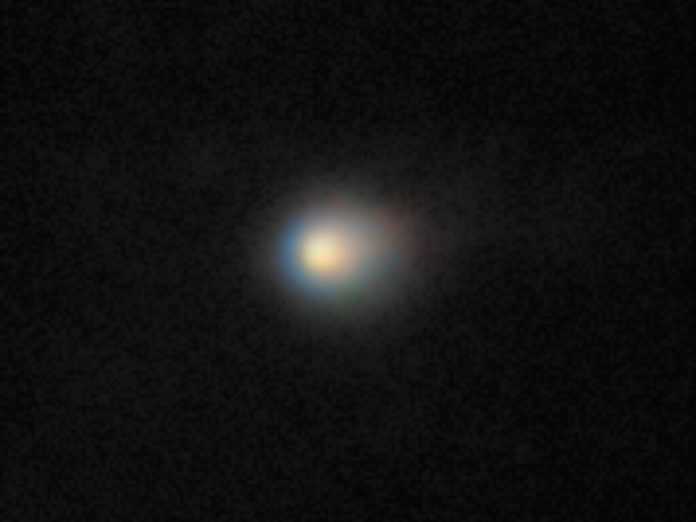
Astronomers have spotted a cosmic traveler passing through our Solar System — only the third of its kind ever discovered.
Using the powerful Gemini North telescope in Hawai‘i, a team led by astronomer Karen Meech captured a detailed image of an interstellar comet named 3I/ATLAS.
This comet, first detected on July 1, 2025, by the ATLAS sky survey system, is providing scientists with a rare glimpse into the chemistry and behavior of objects that formed around other stars.
3I/ATLAS comes from far beyond our Solar System. These kinds of objects, known as interstellar objects, are bits of rocky or icy debris that formed around other stars and were flung into deep space by gravitational forces.
Occasionally, one passes through our Solar System, allowing us a brief chance to study it up close.
Thanks to the extreme sensitivity of Gemini North’s Multi-Object Spectrograph, astronomers were able to see the comet’s coma — a cloud of gas and dust surrounding its icy core. This early observation will help researchers understand what the comet is made of and how it behaves as it warms up while approaching the Sun.
3I/ATLAS is only the third known interstellar object, following the discoveries of 1I/ʻOumuamua in 2017 and 2I/Borisov in 2019. While astronomers believe many more of these visitors pass through our Solar System regularly, most go unnoticed because they are faint and fast-moving, and our telescopes need to be looking in exactly the right place to catch them.
What makes 3I/ATLAS especially interesting is its size and speed. It’s estimated to be up to 20 kilometers (12 miles) wide — much larger than the previous two interstellar objects — and is traveling through space at nearly 25,000 kilometers (15,500 miles) per hour.
Its extremely stretched-out, or “hyperbolic,” orbit confirms that it doesn’t belong to our Solar System and will eventually leave, never to return. For comparison, 1I/ʻOumuamua had a slightly hyperbolic orbit with an eccentricity of 1.2, but 3I/ATLAS has a dramatic eccentricity of 6.2.
Currently, the comet is about 465 million kilometers from Earth and is moving closer. It will come nearest to Earth on December 19, but it poses no danger. It will reach its closest point to the Sun around October 30, just inside Mars’ orbit.
With more advanced telescopes on the horizon — especially the upcoming Vera C. Rubin Observatory, which will begin scanning the night sky regularly — astronomers expect to discover many more of these interstellar travelers, offering exciting new clues about how planets and stars form across the galaxy.
Source: KSR.



